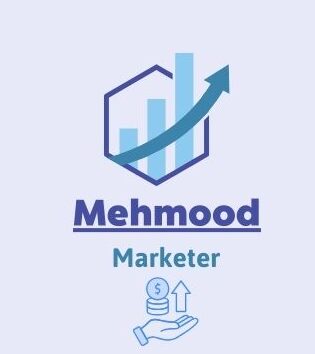Introduction to Content Marketing
Defining Content Marketing
Content marketing is a long-term strategy focused on creating and distributing valuable, relevant, and consistent content to attract and retain a clearly defined audience — and, ultimately, to drive profitable customer action. Instead of directly pitching products or services, content marketing offers useful and educational content that solves real problems for potential customers.

Why Is Content Marketing So Popular Today?
The digital world is saturated with ads, and people have become experts at ignoring them. Content marketing steps in as a refreshing change—it educates, entertains, and builds genuine connections. Plus, search engines like Google love fresh, valuable content, making it a powerful tool for SEO and visibility.
The Core Elements of Content Marketing
Content Creation
Creating content is the heart of content marketing. But it’s not just about writing—it’s about delivering messages in the right format.
Written Content
Blog posts, articles, newsletters, and social media captions all fall into this category. Writing well-researched, engaging, and helpful pieces is essential.
Visual Content
Think infographics, memes, images, and slideshows. Visuals can make complex topics easier to understand and far more shareable.
Audio & Video Content
Podcasts and videos are booming! They allow brands to speak directly to audiences in a more personal and dynamic way.
Content Distribution
Creating content is half the battle and, distributing it effectively is just as important. Whether it’s via social media, email newsletters, or SEO-driven traffic, getting eyes on your content is key.
Content Optimization
Using data to tweak headlines, keywords, images, and formats can boost engagement and visibility.
Types of Content in Content Marketing
Blog Posts
Perfect for driving organic traffic and building authority in your niche.
Social Media Content
Quick, snackable posts that engage your audience and amplify your brand’s reach.
Infographics
Great for explaining data-heavy topics in a visually appealing way.
Videos & Podcasts
Awesome tools for storytelling and thought leadership. Plus, they increase time-on-site and engagement.
Case Studies & White Papers
Perfect for B2B audiences—they offer in-depth insight and proof of success.
E-Books & Guides
Long-form content that helps position your brand as an expert and collects leads via gated content.
Benefits of Content Marketing
Builds Trust and Authority
When you consistently provide valuable content, people see you as a reliable resource.
Improves SEO and Online Visibility
Search engines favor content-rich sites, and optimized content boosts rankings.
Enhances Customer Engagement
People who engage with your content are more likely to engage with your brand.
Generates Leads and Sales
Great content nurtures prospects down the funnel until they’re ready to buy.
How Content Marketing Differs from Traditional Advertising
Traditional ads are all about selling. Content marketing? It’s about helping. Instead of pushing products, it pulls people in by offering real value and building relationships. It’s subtle, but powerful.
Understanding the Buyer’s Journey in Content Marketing
Awareness Stage
Content here addresses pain points and helps prospects realize they have a problem.
Consideration Stage
Now, content should help prospects evaluate solutions. Comparison guides and expert blogs work well here.
Decision Stage
Time to convert! Testimonials, case studies, and product demos can seal the deal.
The Role of SEO in Content Marketing
SEO and content marketing go hand in hand. Good content boosts SEO, and solid SEO ensures your content is discoverable. Keywords, meta descriptions, and internal linking are all crucial.
Platforms to Publish and Share Content
Owned Media
Your blog, website, or email list—where you control everything.
Earned Media
Mentions and shares you earn through others—like guest posts, shares, or press coverage.
Paid Media
Paid promotions like sponsored posts, ads, and influencer partnerships.
How to Build a Content Marketing Strategy
Set Clear Goals
Start with a “why.” Are you trying to increase traffic, generate leads, or boost brand awareness?
Know Your Audience
Who are you talking to? Use personas to understand their goals, pain points, and preferences.
Create a Content Calendar
Planning is everything. A calendar keeps your strategy on track and consistent.
Monitor and Analyze Performance
Use tools like Google Analytics or SEMrush to see what’s working—and what’s not.
Common Content Marketing Mistakes to Avoid
-
Creating content without a clear goal
-
Ignoring SEO
-
Not promoting content enough
-
Focusing on quantity over quality
-
Forgetting to repurpose old content
Tools to Improve Content Marketing Efficiency
Content Creation Tools
Canva, Grammarly, Hemingway Editor, and ChatGPT help you create fast and effectively.
SEO Tools
Ahrefs, SEMrush, and Ubersuggest help find the right keywords and optimize your content.
Analytics Tools
Google Analytics and Hotjar give you insights into how your content performs.
Real-World Examples of Successful Content Marketing
-
HubSpot – Their free blogs, tools, and templates have made them a content giant.
-
Coca-Cola – Their storytelling campaigns emotionally connect with people.
-
Airbnb – Uses blog posts and videos to highlight community and travel experiences.
The Future of Content Marketing
AI tools, personalized content, voice search optimization, and interactive content are shaping the future. One thing’s certain—content marketing isn’t going anywhere. It’ll just keep evolving.
Conclusion
Content marketing isn’t just a buzzword—it’s a powerful way to build relationships, establish authority, and drive business success. By consistently creating and sharing helpful, valuable content, you not only attract the right audience but also earn their trust. And in today’s fast-moving digital world, trust is everything.
FAQs
1. How often should I post content for marketing?
It depends on your audience and goals, but consistency is more important than frequency. Start with one to two posts per week and scale up as needed.
2. Can small businesses benefit from content marketing?
Absolutely! In fact, it levels the playing field and gives small businesses a chance to compete with larger brands.
3. How long does it take to see results?
Content marketing is a long-term strategy. You might see early engagement within months, but real traction usually takes 6–12 months.
4. Is content marketing expensive?
Not necessarily. You can start with a small budget using free tools and platforms. It’s more about effort and consistency than cost.
5. What kind of content performs best?
There’s no one-size-fits-all answer. Blog posts, videos, and infographics all perform well, depending on your audience’s preferences and needs.

